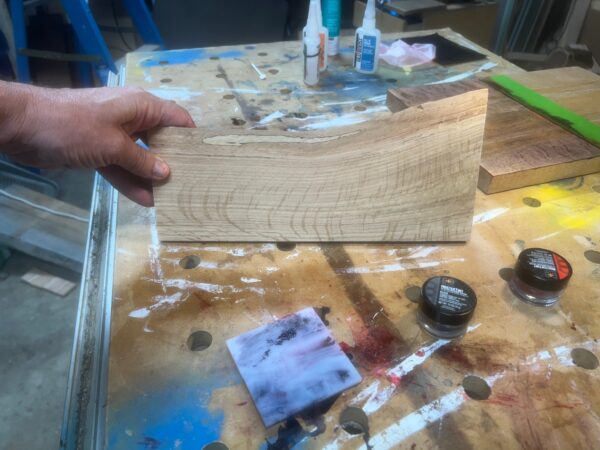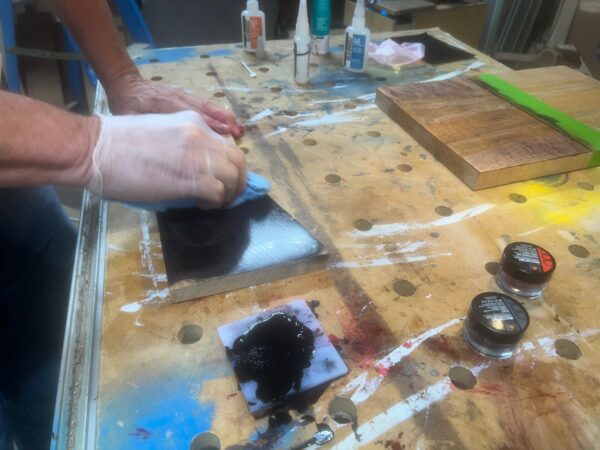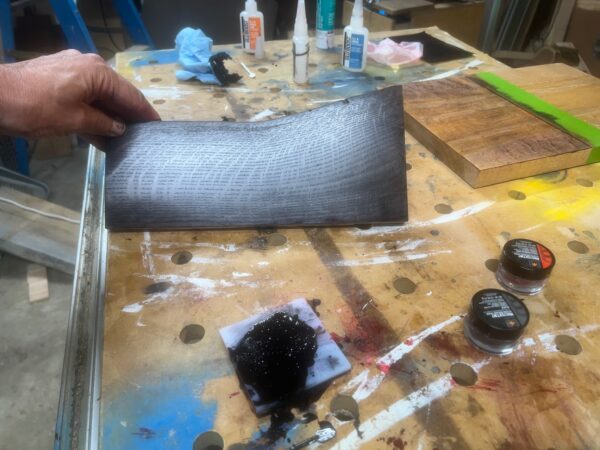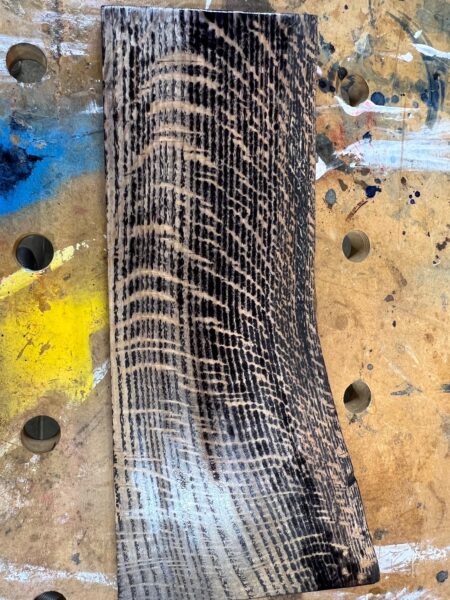
Adding color to Fill N’ Finish to color wood is a wonderful technique. You can even use it to accentuate the figure in a piece of wood.
Woodworkers have been adding color to their woodworking projects since, well … forever. Doing a good job of adding color can be a bit tricky, but using Fill N’ Finish mixed with Master Tint is a great way to make that happen.
In this example I am taking the concept to the next level by filling the pores of a piece of quarter-sawn white oak with a stark color. To accentuate the figure of the white oak, I colored the Fill N’ Finish black, applied the black mixture and then sanded the piece so as to leave the pore filler just in the open grain of the white oak. It makes for a very dramatic look.
As always, prepare the wood by sanding it smooth to at least 220-grit. For this technique, I first apply a light coat of sealer (single coat of lacquer) to the white oak. This will help me sand down to the uncolored wood more easily. When the sealer coat has cured, I mix up black Master Tint and the orange labeled Fill N’ Finish on the mixing palette. A little MasterTint goes a long way, so mix it into the product carefully.

Wipe on the colored Fill N’ Finish mixture, first in a circular motion, then a across and with the grain.
When the Fill N’ Finish is completely mixed, apply the black mixture with a blue shop towel in a circular motion. Cover the surface completely, working the Fill N’ Finish into the open pores of the white oak. Then wipe across the grain and finally with the grain of the wood. When you have an even coat of the mixture on the wood, spray it with GluDry to cure it.

The white oak colored evenly with the cured Fill N’ Finish mixture.
As an aside, notice how well this application of colored Fill N’ Finish covers the wood. If I simply wanted to ebonize this piece of oak, I could stop here, polish out 犀利士
the finish and it would look great. But I wanted to add some pop to the look.
The next step in this technique is to sand the board, removing the very top layer of the colored, hardened mixture, leaving just the black Fill N’ Finish in the pores of the white oak. Some folks use an RO sander and 330-grit paper for this task. But with the sander it is easy to sand away too much of the Fill N’ Finish, so I use the same grit paper but sand by hand. Sand with the grain until you have the look you want.

By sanding away the Fill N’ Finish pore filler until it just remains in the pores or the white oak, you get a fantastic look.
With this piece of white oak, I used black to pop the wood pores dramatically. But you could obviously use other colors for a more subtle look. Light brown or orange would pop the grain but be a bit less dramatic. The choice is always up to you.

A close-up look at the pores filled with the black Fill N’ Finish Mixture.

–Rob Johnstone – Master Woodworker
Manufacturers Note
GluBoost Loves Wood! GluBoost products are highly specialized cyanoacrylate adhesives, accelerators, tints and accessories and are particularly optimized for Lutherie, Woodturning and Woodworking. While GluBoost products bear some resemblance to other products, GluBoost formulas elevate performance high above other CA products, common super glues, accelerators, and color tints for Lutherie, Woodturning and Woodworking.
We thank you for your many years of patronage and we look forward to bringing you many more years of innovative and game changing products.
– The GluBoost Team
Let’s say that you used GluBoost Fill n’ Finish and got a super smooth very shiny finish. But then you thought to yourself, can I...
Read More →Sometimes when you are designing a piece of furniture, a door or a wall panel, you will often need accent pieces to add a bit...
Read More →One great use of Fill n’ Finish is to build up a clear finish on raw wood. Without using any of the typical film coat...
Read More →GluBoost Fill n’ Finish makes a great finish on many projects. (Body) For some woodworkers, applying a finish is that tedious task that you...
Read More →